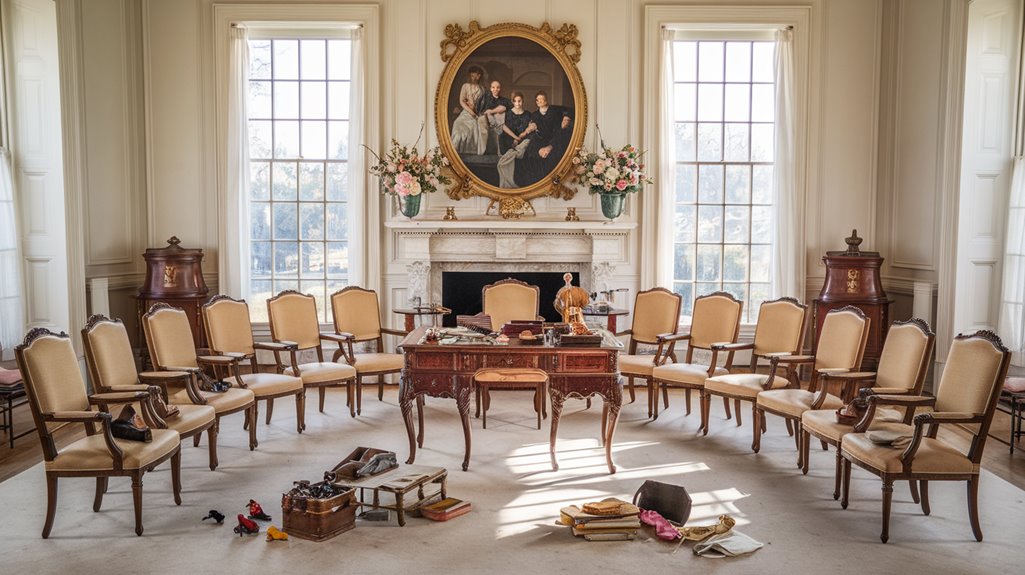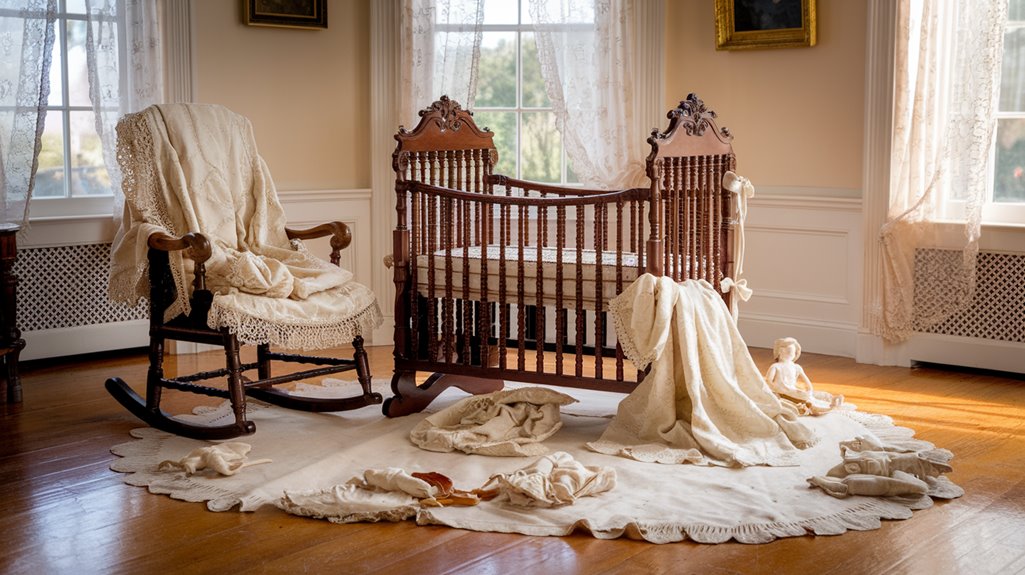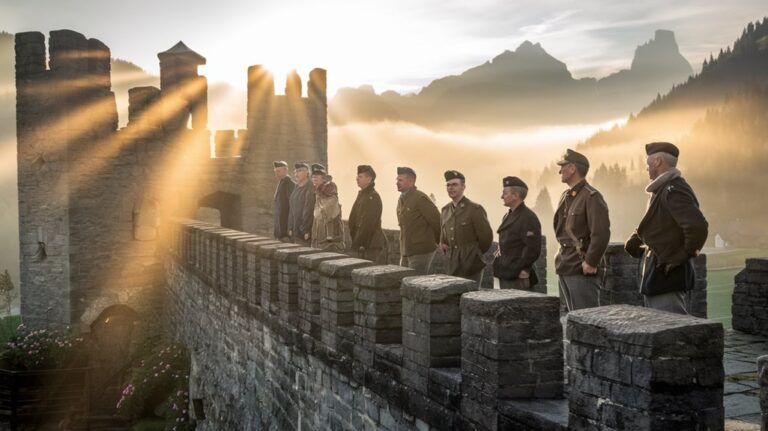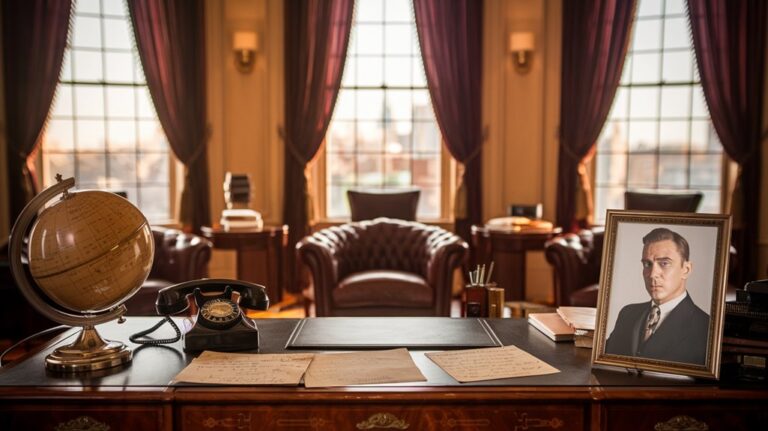John Tyler Fathered 15 Children
Did you know that while most presidents struggled to balance family life with political duties, John Tyler mastered the art of multiplication? You'll find his story particularly fascinating, as he's the only U.S. president who fathered 15 children across two marriages. His remarkable family legacy spans from the early 1800s through today, and there's more to this presidential patriarch than just impressive numbers. Let's explore how Tyler managed to create both a political dynasty and America's largest presidential family.
The Legacy of America's Most Prolific Presidential Parent
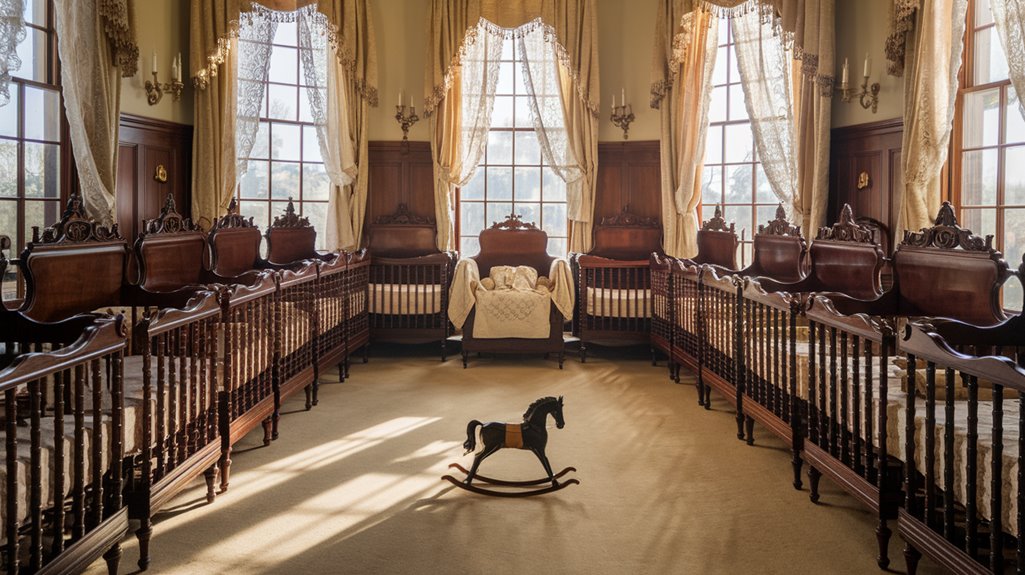
Fatherhood defined John Tyler's remarkable personal legacy as much as his presidency. You might wonder how he managed the parenting challenges of raising 15 children across two marriages, spanning an incredible 45-year period from 1815 to 1860.
Through his dedication to family traditions, Tyler maintained strong relationships with his growing brood while juggling his political career. His second marriage to Julia Gardiner in 1844 made him the first president to marry while serving in office. Before his second marriage, Tyler had been serving as a Virginia governor and building his political career.
What's truly extraordinary is that Tyler's legacy continues to echo through time. Even in 2023, his bloodline remains vibrant with a living grandchild, Harrison Ruffin Tyler, who's over 90 years old.
This remarkable generational span occurred because Tyler had children well into his senior years, with his youngest child Pearl born when he was 70. His 13th child, Lyon, followed suit by having children in his 70s during the 1920s.
From Virginia Gentleman to Presidential Father Figure
While growing up as the son of a prominent Virginia judge and politician, John Tyler absorbed the genteel values that would later shape his approach to fatherhood and leadership.
His Virginia upbringing, marked by his father's legal and political influence, set the foundation for his own remarkable journey. You can trace Tyler's path from his early education at William and Mary College to his swift entry into politics at age twenty-one. He was notably influenced by Patrick Henry's speech during his formative education years.
Despite losing his mother at age seven, Tyler's privileged background prepared him for his future roles as both a statesman and father. Later in life, his fourteen children would create significant financial strain on the family's resources.
His father's guidance steered him toward law and public service, while his Virginia roots instilled the social expectations of his class.
These influences would later reflect in how he managed his extensive family of fifteen children and his presidential duties.
The Tyler Family Tree: A Presidential Dynasty
The marriage of John Tyler to Julia Gardiner in 1844 marked the beginning of an unprecedented presidential dynasty. At age 24, Julia was 30 years younger than Tyler, yet their union produced seven more Presidential offspring, starting with David Gardiner Tyler in 1846 and ending with Pearl Tyler in 1860 when Tyler was 70. Before becoming President, he managed his Woodburn plantation while pursuing his political ambitions. After becoming the first vice president to assume the presidency following William Henry Harrison's death, Tyler faced numerous political challenges. The Tyler genealogy continues to astound historians, as his descendants have shown remarkable longevity. You'll find evidence of this in Lyon Gardiner Tyler Jr., who lived until 2020, and Harrison Ruffin Tyler, who's still alive at over 90 years old. With 15 children in total, Tyler holds the record for the most children fathered by any U.S. president, and his family tree continues to grow through multiple generations of living descendants.
Marriage to Letitia: The First Eight Children
John Tyler's marriage to his first wife Letitia Christian in 1813 marked the beginning of his journey into fatherhood. Together, they'd eight children, with seven surviving infancy.
While Tyler pursued his political career, Letitia's influence on the family was profound as she managed both their Cedar Grove plantation and domestic responsibilities. Her strong Episcopal faith guided her decisions about their children's education and upbringing.
The parenting dynamics in the Tyler household reflected Letitia's conservative upbringing. She maintained a traditional approach to child-rearing while overseeing the plantation's economic affairs, including the care of their slaves. Tyler would later have seven more children with his second wife Julia Gardiner.
Their children – Mary, Robert, John Jr., Letitia, and Elizabeth – grew up in this structured environment until their mother's health declined.
After Letitia's stroke in 1839, her ability to participate in family life diminished considerably, leading to her daughter-in-law taking over her First Lady duties until her death in 1842.
Julia Gardiner: A New Chapter in Fatherhood
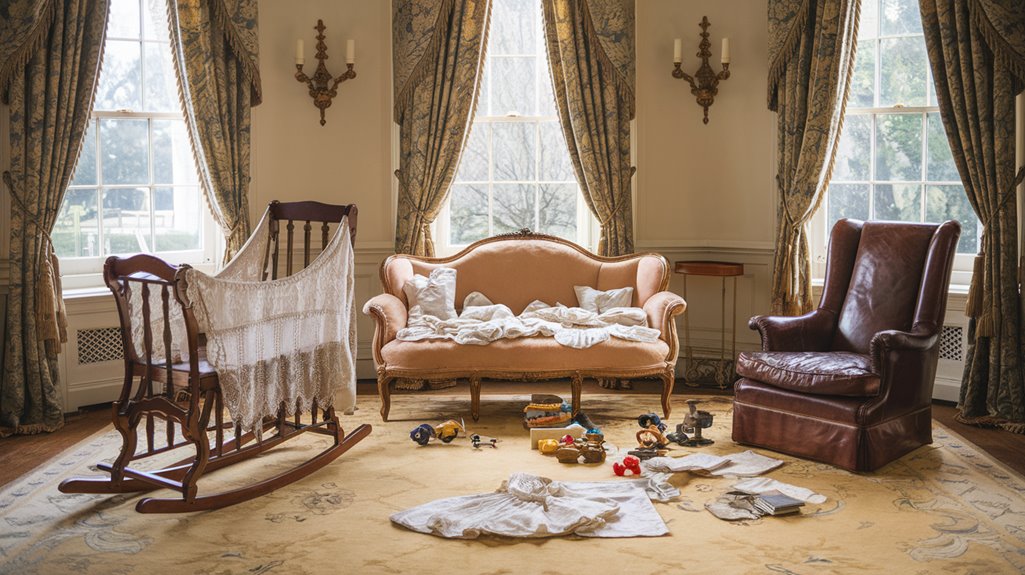
At age fifty-four, President Tyler found an unexpected romantic connection with Julia Gardiner, a vivacious New Yorker thirty years his junior. After meeting at a White House reception in 1842, their relationship deepened throughout 1843, leading to a secret wedding in June 1844.
Julia's influence on the President was immediate and profound. She transformed White House protocols by introducing European-style customs, including a court of ladies-in-waiting and new musical traditions. She also established the now-familiar tradition of having Hail to Chief played when the president arrives at official functions. Their relationship grew stronger after the tragic USS Princeton explosion that claimed her father's life in 1844.
As First Lady, she actively supported her husband's political agenda, particularly regarding Texas annexation. The couple's dynamic partnership continued at Sherwood Forest Plantation, where they expanded Tyler's family with seven more children.
Despite controversy over their age difference and Julia's later support of the Confederacy, their marriage brought new energy to Tyler's life and legacy.
Life at Sherwood Forest: Raising a Presidential Family
Following their marriage, Sherwood Forest became the heart of America's largest presidential family, where Tyler and Julia raised an extraordinary household of fifteen children.
Family traditions and plantation life intertwined at their 1,600-acre estate, where you'd find multiple generations living under one roof. The plantation was managed with the help of forty-six enslaved individuals by 1850. The family resided in what became known as the longest frame house in America, stretching an impressive 301 feet.
Life at Sherwood Forest included:
- A grand ballroom specially designed for the Virginia Reel, a popular dance of the era
- Daily management of farming operations and household affairs
- Regular entertainment of distinguished guests
- Continuous adaptations to accommodate the growing family
- Preservation of family traditions despite financial challenges
Despite facing constant monetary struggles due to poor financial management and the costs of maintaining such a large household, the Tylers maintained their social status and preserved the estate, which still stands today as a National Historic Landmark.
Breaking Records: The Largest Presidential Family
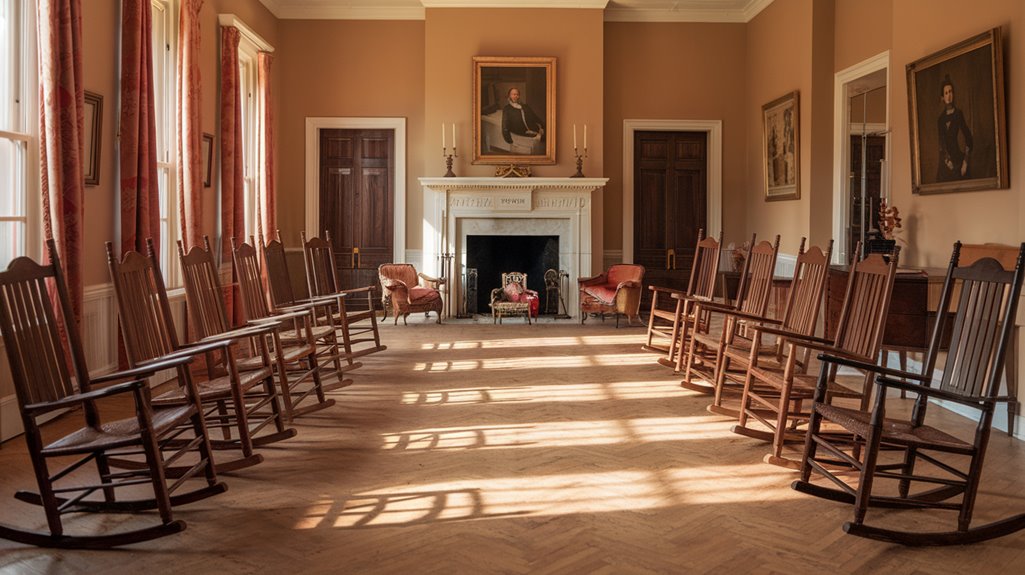
With fifteen children from two marriages, President Tyler shattered all records for the largest presidential family in U.S. history. His first marriage to Letitia Christian produced eight children, while his second marriage to Julia Gardiner added seven more to his legacy of Presidential Parenting.
You'll find it remarkable that Tyler achieved this record while managing the demanding responsibilities of the presidency. His first wife was an invalid throughout his presidency, adding to the challenges of managing such a large family. Julia stood quite tall like other notable First Ladies, with a height difference of nine full inches between her and President Tyler.
The Family Dynamics in Tyler's household were unique, particularly after he became the first president to marry while in office. His second wife, Julia, who was 30 years his junior, brought new energy to White House receptions.
When you compare Tyler's family size to other presidents, you'll notice the stark contrast – from James K. Polk, who'd no children, to Thomas Jefferson's documented eight offspring.
The Tyler Children's Impact on American History
The Tyler children's influence on American history extended far beyond their father's presidency, particularly through their complex relationship with slavery and the antebellum South.
 Aunt Fanny and others, the Tyler children witnessed firsthand the daily realities of plantation life.
Aunt Fanny and others, the Tyler children witnessed firsthand the daily realities of plantation life.
Presidential Parenting in the 19th Century
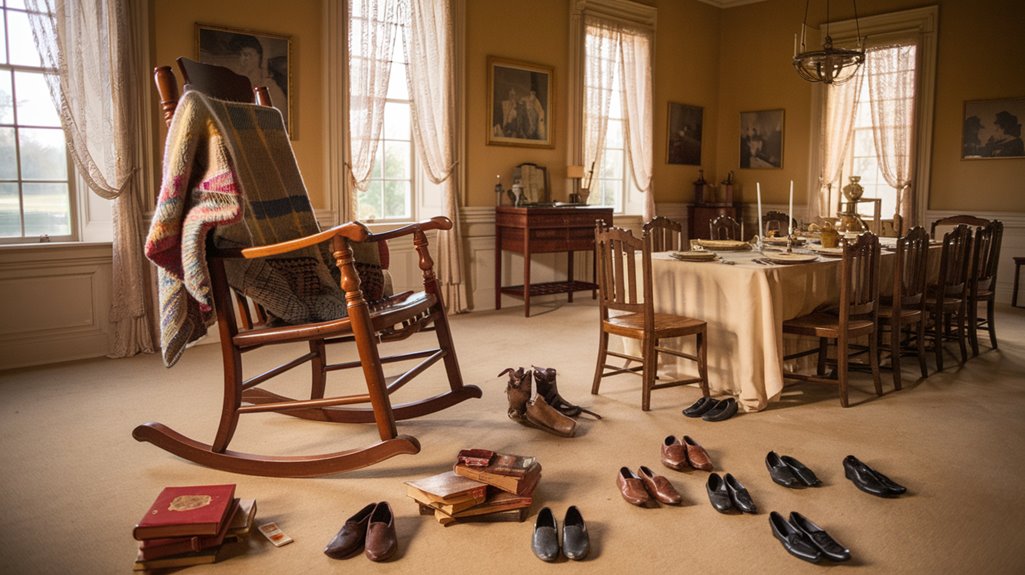
During the 19th century, presidential parenting styles varied dramatically, from Lincoln's famously permissive approach to Hayes's hands-on dedication.
You'll find that presidential affection manifested differently among these leaders, with Lincoln allowing his children remarkable freedom in the White House, while Hayes actively participated in his children's milestones and daily care. Work-family conflict created unique challenges for presidents trying to balance their duties.
The demanding nature of the presidency often strained family dynamics, forcing many presidents to choose between their official duties and parental responsibilities.
While Lincoln found solace from presidential stress by playing with his children, other leaders became more distant fathers.
These contrasting approaches to parenting often mirrored their leadership styles – nurturing presidents typically embraced inclusivity in both roles, while career-focused leaders maintained a more hands-off approach to both family and governance.
Like George Washington, many presidents were viewed as father figures by the American public, creating expectations for both their personal and political conduct.
The Unique Challenges of a Large Presidential Family
Managing a large presidential family presented unique challenges that extended far beyond typical parental duties. In John Tyler's case, raising 15 children while leading the nation required exceptional financial management and emotional resilience.
You'd find the logistical challenges particularly intimidating, from coordinating schedules to arranging travel for such a large family.
Consider these key pressures Tyler's family faced:
- Substantial expenses for education and daily needs of 15 children
- Constant media scrutiny and public perception management
- Complex residential arrangements in the White House
- Balancing presidential duties with family obligations
- Maintaining privacy while meeting social expectations
The combination of public duties and family responsibilities created unique emotional pressures, requiring careful navigation of both personal and presidential roles while under intense public scrutiny. Just as establishing precedents was crucial for George Washington's presidency, Tyler had to determine how to present his unusually large family to the public. Much like Teddy Roosevelt's daughter Alice, Tyler's children's behavior and public appearances required constant attention to prevent embarrassing incidents that could affect his presidency.
Tyler's Role as Father While Leading the Nation
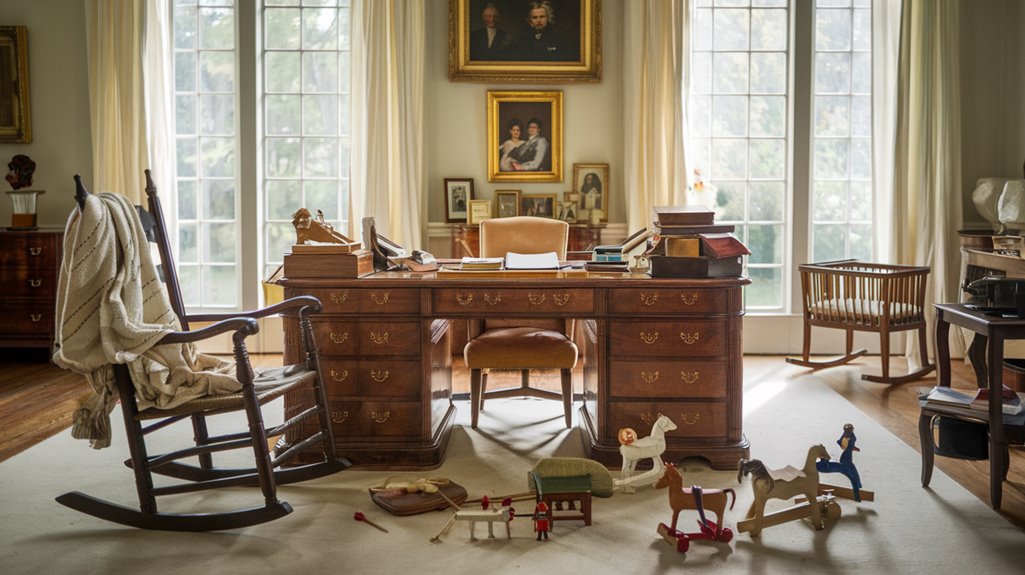
Balancing fatherhood with presidential duties proved particularly challenging for John Tyler, who faced the dual pressures of raising a large family while steering the nation.
You'll find that his fatherly responsibilities often took a backseat to political pressures, as he kept his family away from Washington D.C.'s unhealthy conditions until he became president. Even then, his time with them remained limited due to constant travel and official obligations.
Tyler's approach to parenting reflected both his strengths and weaknesses. While he tried to provide for his children through nepotism, including appointing his eldest son as press secretary, he also had to make tough decisions, like firing that same son for unreliability. Much like medieval English society, Tyler's world was governed by strict social structures and familial obligations.
His second wife Julia stepped in to help raise the children, especially after his first wife's death. Tyler continued expanding his family even after retiring to Sherwood Plantation, where he had seven more children with Julia.
Maintaining Family Bonds Across Generations
As the Tyler family grew across generations, maintaining strong familial bonds became increasingly vital to preserving their shared heritage and values. Through regular family gatherings and shared stories, they've built a foundation of intergenerational wisdom and collective memories that strengthen their connection to their unique legacy. Active listening and open communication helped foster deeper understanding between different age groups within the Tyler family. Their commitment to truth and evidence mirrors how extraordinary claims require extraordinary proof when documenting family histories.
Key aspects of maintaining Tyler family bonds include:
- Organizing traditional gatherings that adapt to changing times while preserving cultural values
- Sharing stories and experiences that foster emotional support across generations
- Utilizing technological connections to bridge geographical distances
- Building resilience through strong intergenerational relationships
- Engaging in family activities that create lasting memories
You'll find that family engagement remains important in carrying forward the Tyler legacy, ensuring their rich history continues to inspire and unite future generations through tradition adaptation and meaningful connections.
The Tyler Children's Diverse Paths in Life

The remarkable paths chosen by John Tyler's children reflect their father's diverse interests in law, politics, military service, and education.
You'll find their legal careers were shaped by family influences, with John Tyler Jr. practicing law in Baltimore and serving in his father's presidential administration.
The family's military heritage runs deep, as John Jr. served as both a U.S. Army captain during the Mexican-American War and later as a Confederate colonel. Like their father, who was commissioned as captain in Virginia's militia, the Tyler children demonstrated strong military leadership.
Their educational pursuits were equally impressive, with many children following their father's footsteps at prestigious institutions. John Jr. attended the University of Virginia and the University of Pennsylvania, studying American law and government.
As part of a family of fourteen siblings, John Tyler Jr.'s life experiences were shaped by a large and influential household.
This combination of legal expertise, military service, and academic achievement demonstrates how the Tyler children carried forward their father's legacy of public service.
Presidential Descendants: A Living History
Presidential descendants offer remarkable connections to America's past, with John Tyler's family standing out as an extraordinary example of living history.
You'll find that the Tyler family's living legacy bridges nearly two centuries of American history through their extended lineage and historical connections.
Consider these fascinating aspects of presidential descendants:
- Harrison Ruffin Tyler, at 91, remains one of the last living grandchildren of a U.S. president.
- John Tyler's son Lyon had children in his 70s, extending the family timeline.
- The Tyler family spans most of U.S. history through living descendants.
- Eliza Newell Garfield uniquely descends from three presidents.
- Presidential descendants provide tangible links for historical education and research.
John Tyler fathered seven more children through his second marriage at age 54, further extending his family's remarkable legacy.
The family remains connected to their heritage through the historic Sherwood Forest Plantation, which still stands as a testament to Tyler's legacy.
This remarkable longevity has kept the Tyler family's story alive, offering contemporary Americans a direct connection to their nation's past.
The Lasting Impact of Tyler's Family Legacy
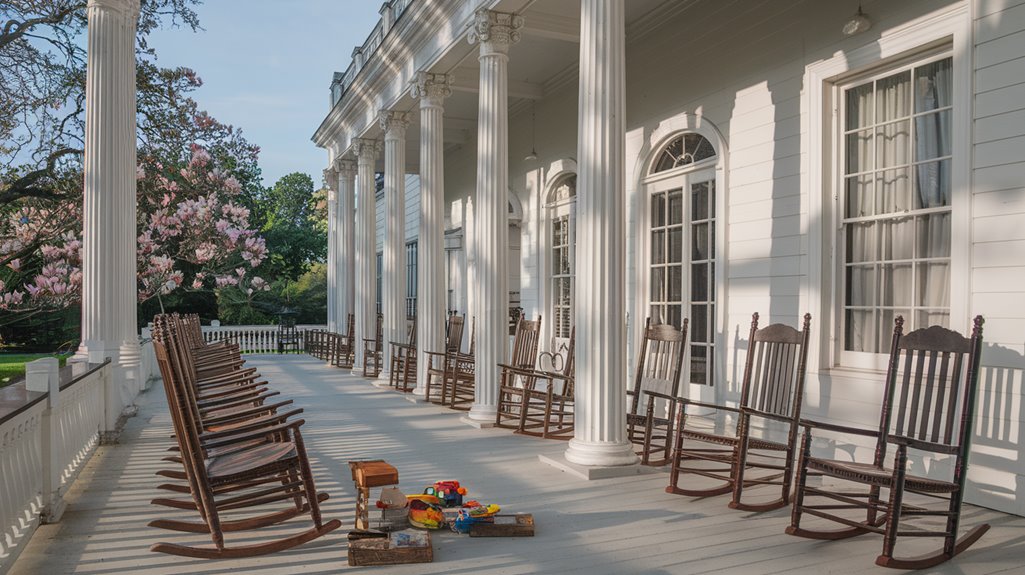
While John Tyler's presidency ended in 1845, his family's impact on American history continues to resonate through generations of descendants and their unique connections to our nation's past.
His struggles with compromise were evident in both his political and personal life, affecting how he managed his large family's affairs. Despite owning 70 slaves, Tyler showed unusual compassion for his time, refusing to allow whippings or family separations. Tyler's late-life marriages resulted in children born well into his elderly years.
His personal conflict with slavery, coupled with his constant money troubles, offers a window into the moral and economic challenges faced by American leaders.
The remarkable span of Tyler's family history – from the nation's founding through the Truman era – provides you with a living bridge across nearly two centuries of American development and social change.

